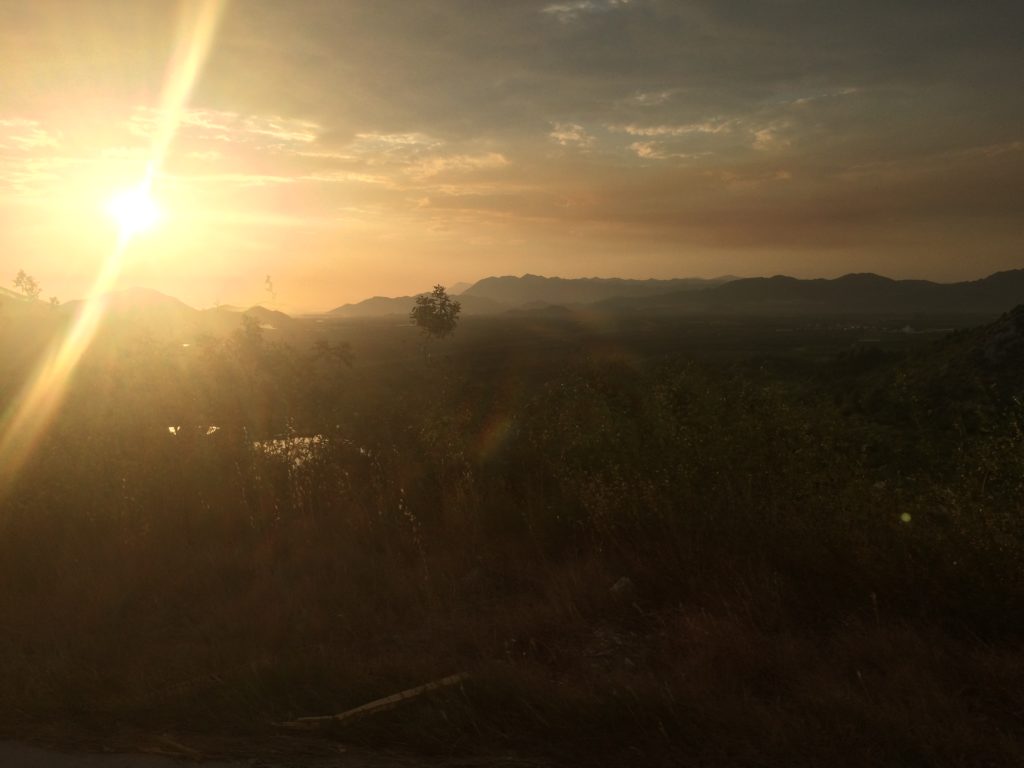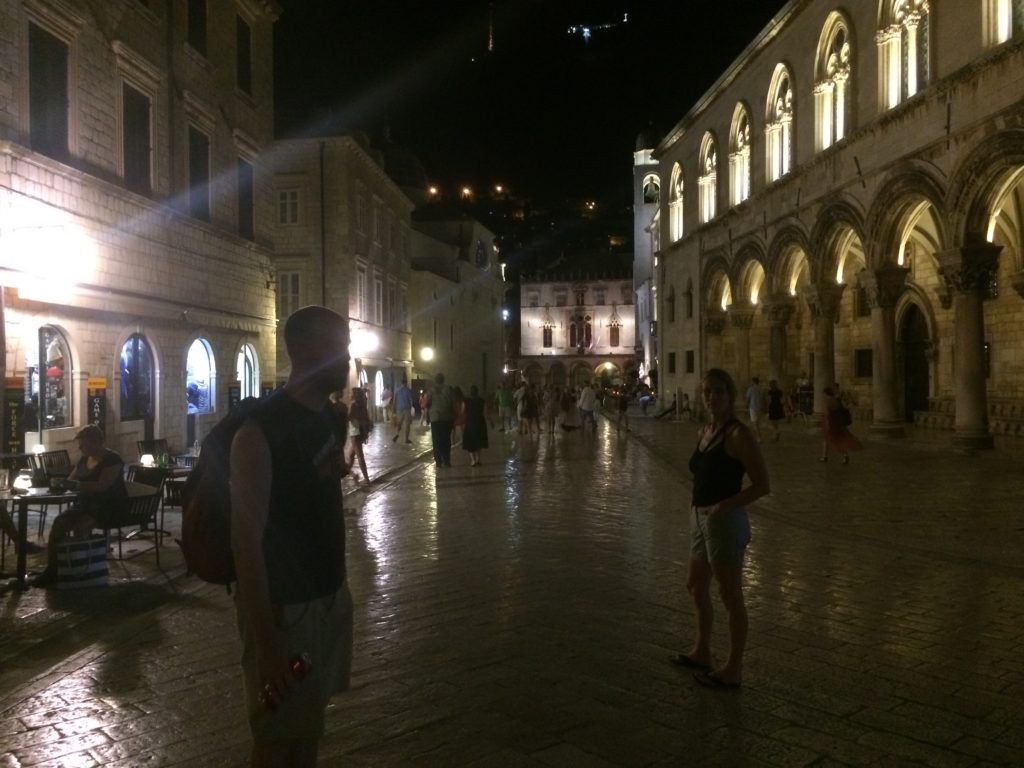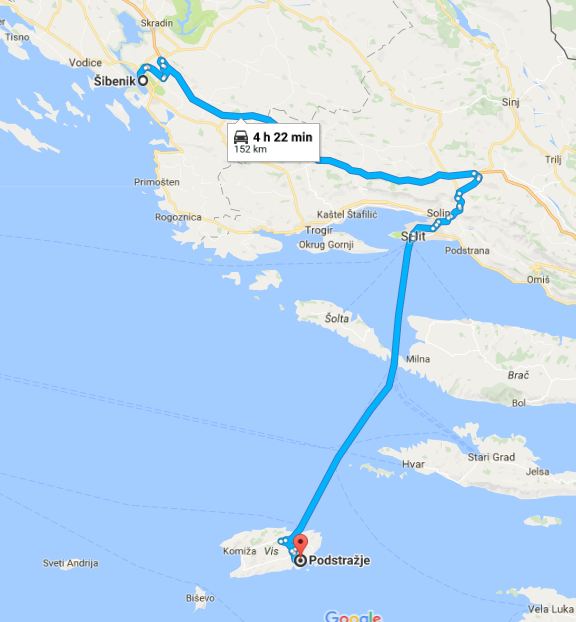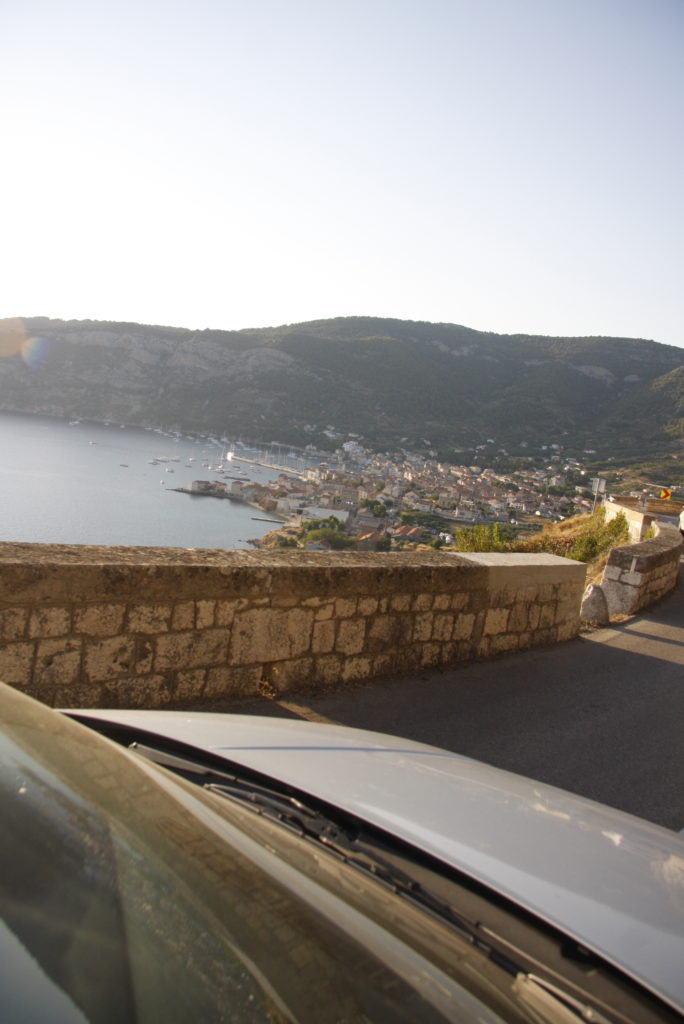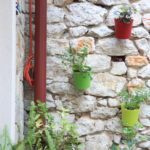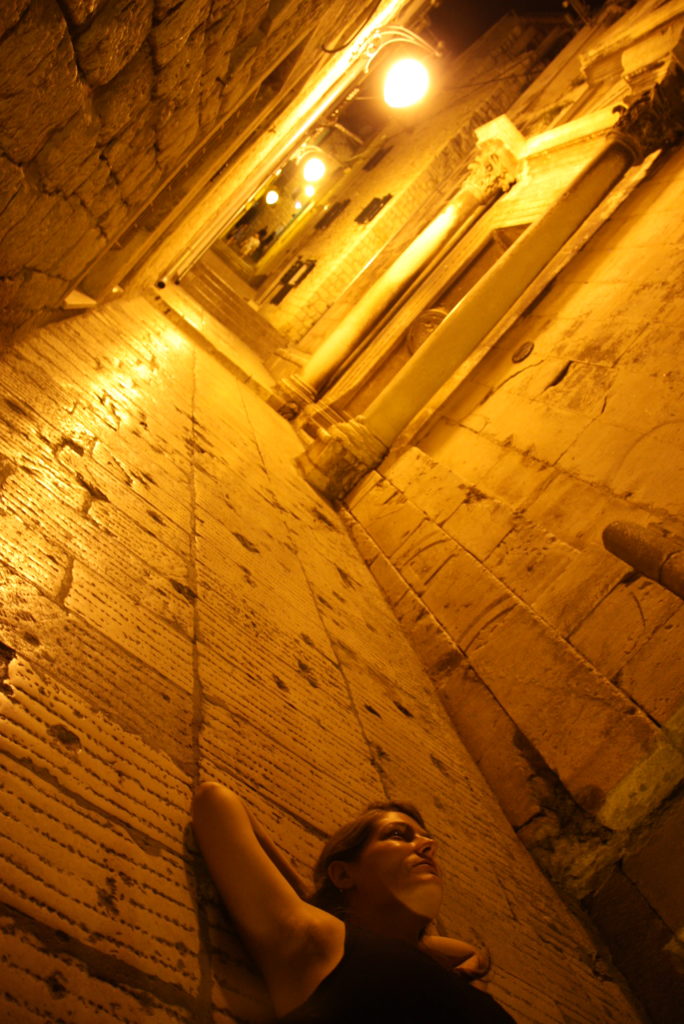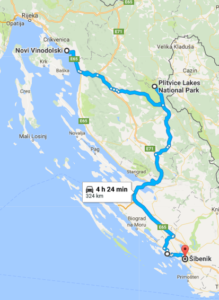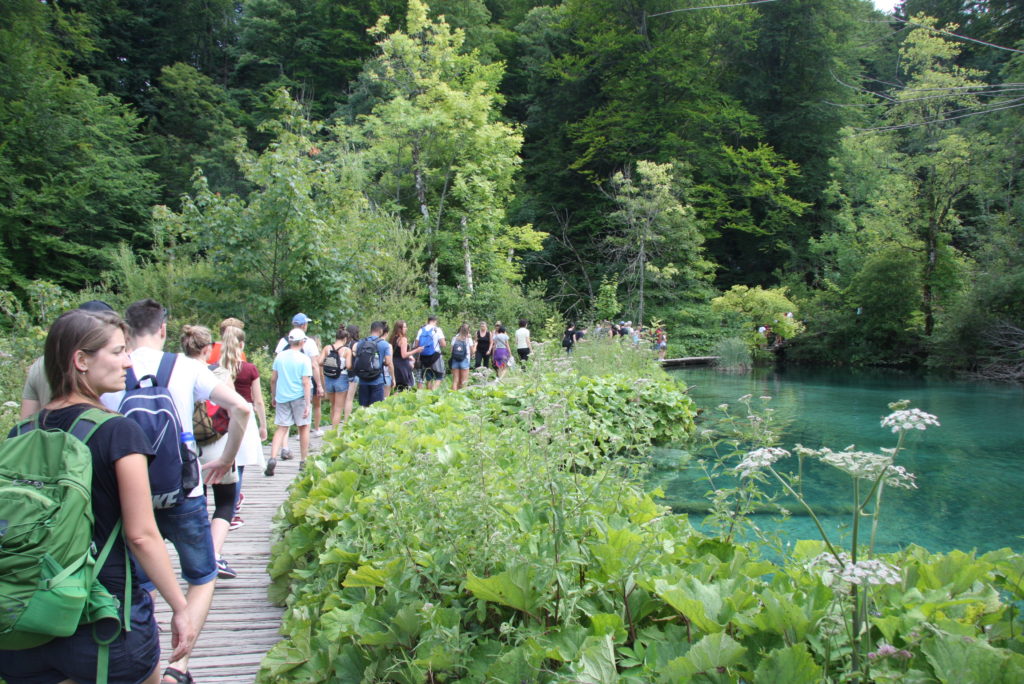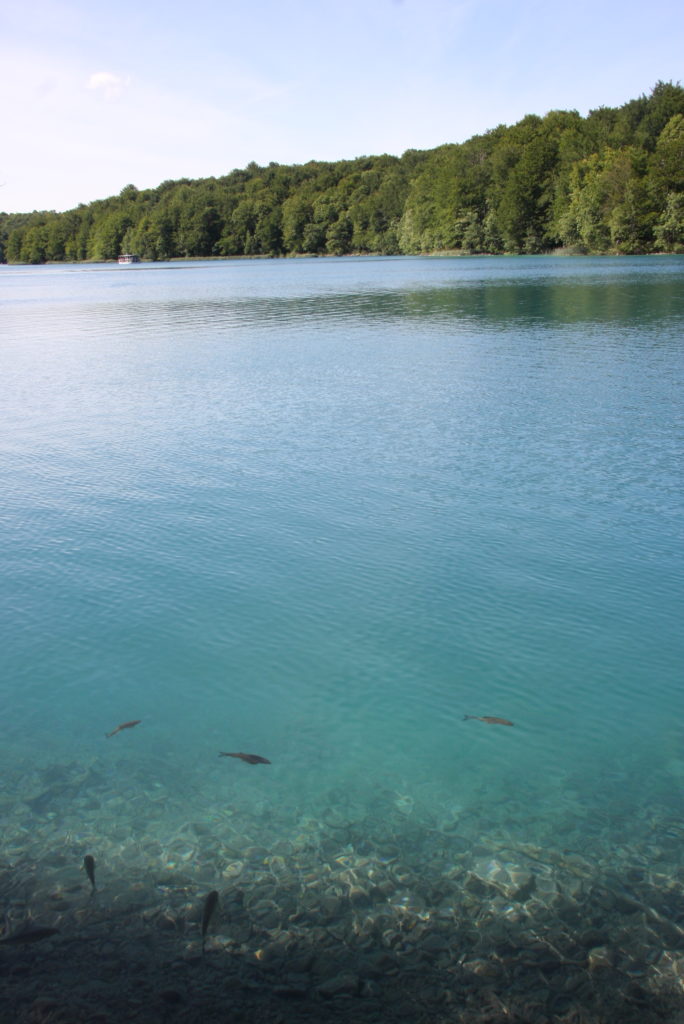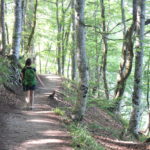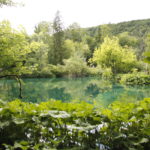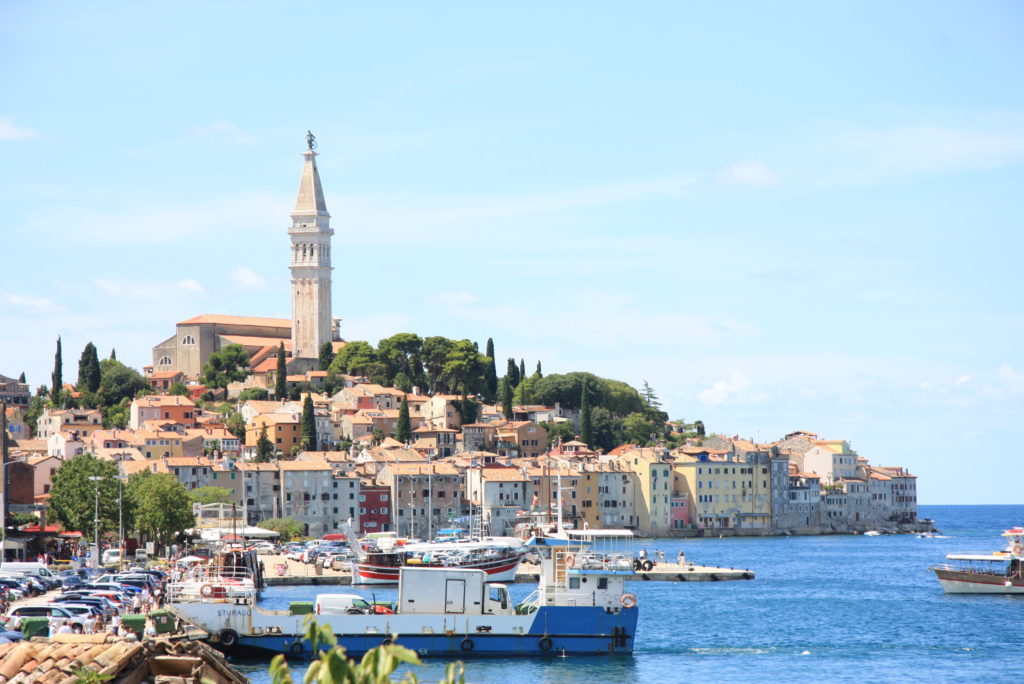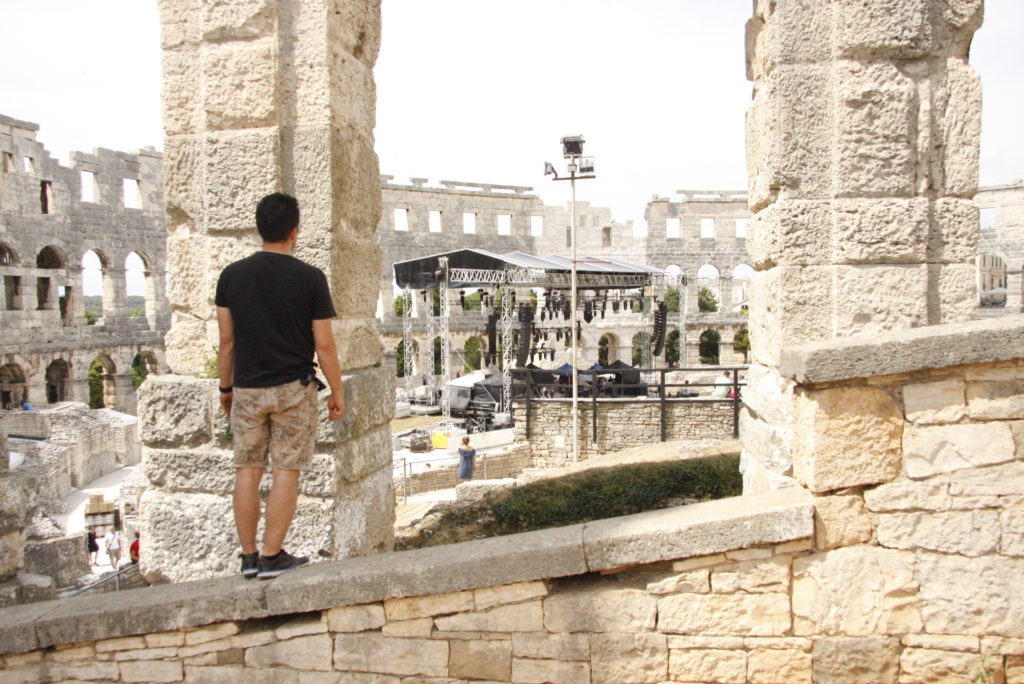- Date: 31 juillet 2017
- Départ: 12h00
- Arrivée: 21h00
- Température: soleil
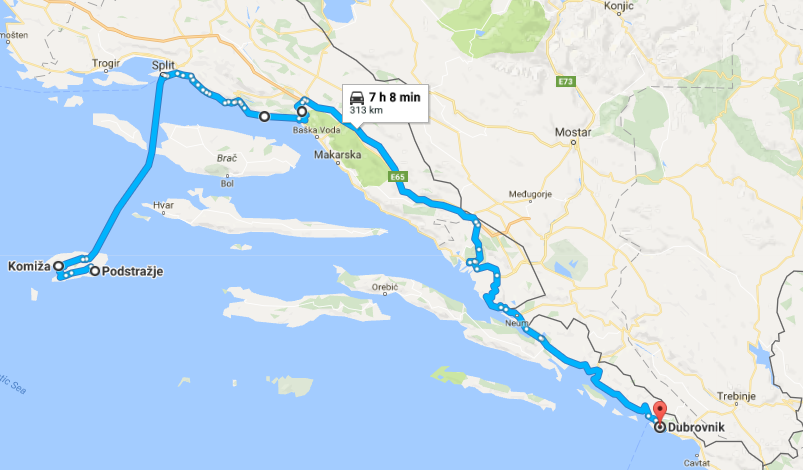
Partis à l’heure prévu, nous avons passé par Vis avant de nous rendre à Komiža afin d’acheter nos billets pour le traversier et ainsi gagner de précieuses minutes. Ma plongée se terminait vers 11h00 et il fallait être en ligne pour le traversier vers 11h30. Malheureusement, la billetterie était fermée.
Arrivé au centre, j’ai pris possession de mon équipement, réglé ma plongée (50 Euros) puis fait connaissance avec mon équipier, un Slovène en vacances sur l’île pour une dizaine de jours et qui semblait avoir autant d’expérience en plongée que moi. Le bateau parti, je me suis rendu compte qu’il n’y avait pas de profondimètre sur la console de mon équipement de location. D’ailleurs, aucun équipement n’en avait. Normalement, je plonge avec mon ordinateur (qui donne la profondeur) alors je n’en aurais pas fait de cas mais là, c’était un brin déconcertant (en réalité très risqué) d’autant plus que nous allions plonger profond. Bon, j’allais devoir m’en remettre aux informations de mon équipier et mon expérience. Tout de même, je brisais là nombre de règles du métier.
Une fois descendu au plus bas, j’ai senti un peu de narcose et me suis dit que compte tenu de la lumière et de la distance avec la surface, nous devions être à 40 mètres; le tout a été confirmé par un coup d’oeil à l’ordinateur de mon coéquipier. Quant aux coraux, ils étaient bien là et similaires à ceux des Caraïbes quoi que moins nombreux et habités par moins de faune. La remontée s’est faite toute en douceur avec un palier de sécurité plus que nécessaire cette fois car nous avions dépassés les limites de décompression par moment.
Une fois retourné sur la terre ferme, j’ai lavé mon équipement, salué ceux avec qui j’avais partagé la matinée et Audrey m’a ramassé devant le centre. Nous devions à tout prix ne pas rater le ferry de 12h00. À Vis, un petit vent de panique est passé en voyant l’énorme file de véhicules pour le ferry. Finalement, nous sommes rentrés les avants derniers. Quelle chance. Une fois à Split, un bon deux heures a été perdu à chercher un objectif de remplacement pour l’appareil photo. Il était plus que temps que nous nous mettions en route vers Dubrovnik si nous voulions pouvoir y passer un peu de temps. Malheureusement, nous avons encore étés retardés par une petite bourde de navigation qui nous a fait longer la côte plutôt que d’emprunter l’autoroute.
Quelques heures plus tard et un petit morceau de Bosnie traversée, nous étions à Dubrovnik, surnommée la perle de l’Adriatique et rendu d’autant plus célèbre depuis que la fameuse télé-série Game of Thrones y a tourné les scènes ayant lieu dans la capitale. On ne va pas en Croatie sans visiter Dubrovnik tout comme on ne va pas en France sans passer par Paris. Pourtant, on m’avais averti que je n’allais pas tant apprécier l’expérience…
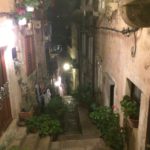 Il était 22h00 passés quand nous sommes sortis de l’auberge pour nous diriger vers la vielle ville. Arrivé là, je me suis mis en mode exploration et ai frénétiquement traîné Audrey et sa mère dans tous les coins qui attiraient mon attention. Je leur ai offert de me laisser à moi même et de revenir demain si elles voulaient voir les choses à leur rythme, mais moi, je ne comptais pas y remettre les pieds alors j’allais rentrer le maximum de visite jusqu’à l’épuisement. Oui, Dubrovnik était belle et spectaculaire, mais l’atmosphère qui régnait à l’intérieur de ses murs fortifiés était en tout point comparable à celle de la rue Saint-Laurent à Montréal: factice et cher. Quelques heures plus tard, Audrey et moi satisfaits et sa mère épuisée, nous sommes rentrés nous coucher. Le lendemain, le Monténégro nous attendait.
Il était 22h00 passés quand nous sommes sortis de l’auberge pour nous diriger vers la vielle ville. Arrivé là, je me suis mis en mode exploration et ai frénétiquement traîné Audrey et sa mère dans tous les coins qui attiraient mon attention. Je leur ai offert de me laisser à moi même et de revenir demain si elles voulaient voir les choses à leur rythme, mais moi, je ne comptais pas y remettre les pieds alors j’allais rentrer le maximum de visite jusqu’à l’épuisement. Oui, Dubrovnik était belle et spectaculaire, mais l’atmosphère qui régnait à l’intérieur de ses murs fortifiés était en tout point comparable à celle de la rue Saint-Laurent à Montréal: factice et cher. Quelques heures plus tard, Audrey et moi satisfaits et sa mère épuisée, nous sommes rentrés nous coucher. Le lendemain, le Monténégro nous attendait.

